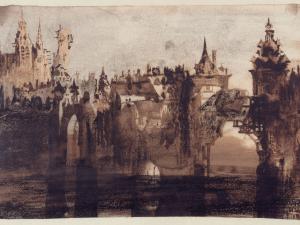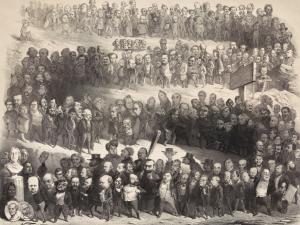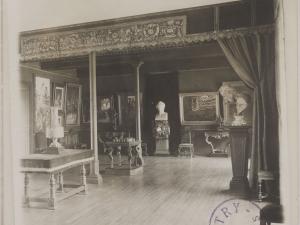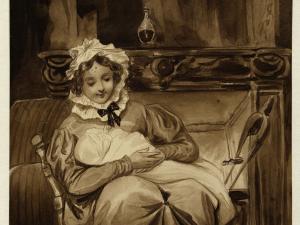Portraits... Victor Hugo and His Family
From the young, long-haired, Romantic writer to the famous, white-bearded, old man, Victor Hugo was both idealised and caricatured, in drawings and paintings, photographs and sculptures, making him one of the most portrayed men of his time. The museum's collection offers a comprehensive view of the poet's changing appearance throughout his life and into immortality. A whole gallery of family portraits provides visibility of the great man's private life.
When the museum was created, large bound albums offered visitors the opportunity to peruse all the known portraits of Victor Hugo. As a monographic museum, the Maison de Victor Hugo is intended to be the repository of his image, both as a man and as a writer. Since the apartment on the Place des Vosges and Hauteville House in Guernsey were both family homes, this duty extends to all members of the family.
The hundreds of portraits in the collections, with all the different techniques and ways of portraying the man, tell us the story of Victor Hugo. We could mention, for example, the promising young poet decorated with the Legion of Honour at an early age, or the leader of the Romantic Movement who soon merited a marble bust by his sculptor friend. Each contributed to a literary then political strategy, or combined both at once. The authors of the works - Louis Boulanger, David d'Angers and Auguste de Châtillon - reflect artistic friendships and shared struggles. The portraits also demonstrate the closeness of the family, which withstood extra-marital liaisons, and remained united through its rise in social status where politics mixed with literary success.
In contrast, the great man’s image was often challenged by caricatures that dogged every occasion. The high forehead, used by artists to denote his genius, became the distinctive feature of the parodied man.
Later, during exile, the family photography business (the “Jersey workshop”) implemented a clear strategy from 1853 to 1855, showing the Republican as the embodiment of the resistance to Napoléon le Petit [Napoleon the Small], and the mature man who rediscovers his poet's pen. He is depicted at the time with his long hair always thrown back, “Listening to God”, or meditating on le rocher des proscrits [Exiles’ Rock].
Then, in 1861, Victor Hugo let his beard grow and cut his hair. One journalist did not believe that this new image had a future. Yet it was this face that became most famous and how he would be forever remembered. Photos taken around the time that Misérables was published were to permanently fix the image of “Victor Hugo”. From then on, and even more so after his return to France in 1870, the now-famous man’s appearance was set. Two portrayals, in photographs by Nadar and Carjat, had a major influence, as did the painting by Léon Bonnat. Endless copies of these versions were made in etchings and print. Cheap “plated” editions were even produced, declaring him the Father of the Republic, the ideal grandfather and the dedicated poet. With the publication of L’Art d’être grand-père, [The Art of Being a Grandfather], the family itself entered into this glorious celebrity, with the image of Georges and Jeanne, his grandchildren. Alongside all these famous reproductions, his caricature flourished in the illustrated press, adding a touch of wit and humour. Even if they dented the stature of the great man and often seemed to soften his edges, Hugo himself liked to collect these papers.
Although Nadar, Dalou and others captured the image of Hugo on his deathbed, it was Rodin who aided his transition from living to immortal. The sculptor was permitted to observe Hugo in his final years. After his death, Rodin created a visionary, inspired representation of Victor Hugo that gives fresh impetus to the great man’s image.





